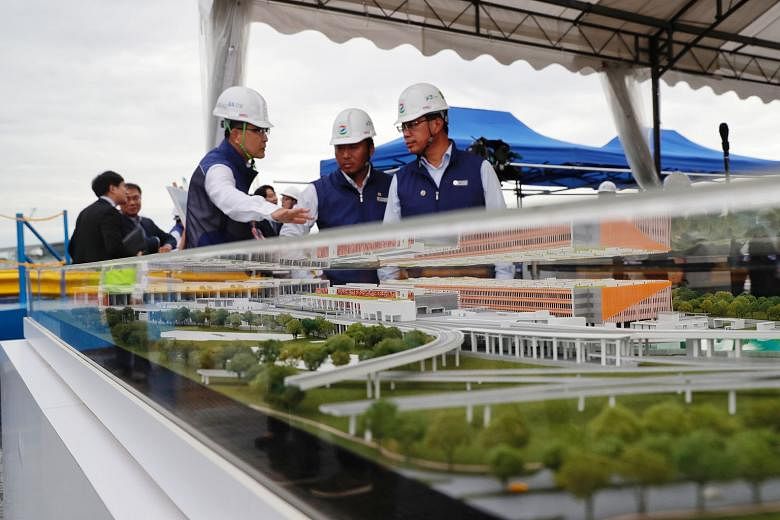With the cost of constructing rail lines expected to rise over time, it would be responsible to set aside funds for investing in the rail network for future generations, said Senior Minister of State for Transport Janil Puthucheary in Parliament yesterday.
The Rail Infrastructure Fund (RIF), announced in this year's Budget, will enable the Government to save when its fiscal position allows, and smooth out the large capital outlay for rail projects, he added.
He was speaking during the debate on the Land Transport Authority of Singapore (Amendment) Bill, which was passed yesterday and will formalise the setting up of the RIF. It will get an initial $5 billion injection.
Three parliamentary members - Mr Darryl David (Ang Mo Kio GRC), Mr Henry Kwek (Nee Soon GRC) and Nominated MP Walter Theseira - spoke in support of it.
Dr Janil said building rail lines will cost more, not just because of inflation, but owing to more challenging construction conditions, such as deeper MRT tunnels and stations, arising from Singapore's increasingly built-up environment.
The RIF, to be managed by the Land Transport Authority (LTA), will have three key uses: the first includes constructing infrastructure such as stations, tunnels and tracks. The second is to replace, upgrade and add rail infrastructure, such as tunnels and tracks for existing rail lines, and its third use is for investment, to enable the fund to keep up with inflation.
Dr Janil said the RIF is separate from the Railway Sinking Fund (RSF), also managed by LTA.
The RIF is for expanding the rail network and is made up of government subsidies, while RSF is for renewing rail operating assets, like trains, and comprises government subsidies and the licence charge collected from rail operators.
"This distinction reflects the allocation of financial responsibility between taxpayers and commuters - tax dollars will be used to invest in the civil infrastructure and the first set of operating assets," Dr Janil said.
"Thereafter, every generation of commuters will need to pay part of the recurrent cost of operating the rail network, including the renewal of operating assets. This ensures the burden on taxpayers remains sustainable," he added.

